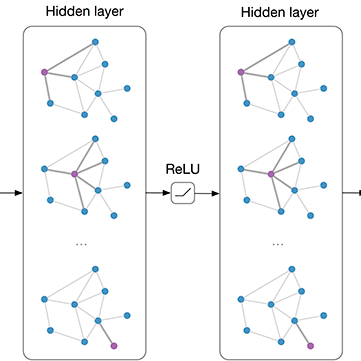We present Border-SegGCN, a novel architecture to improve semantic segmentation by refining the border outline using graph convolutional networks (GCN). The semantic segmentation network such as Unet or DeepLabV3+ is used as a base network to have pre-segmented output. This output is converted into a graphical structure and fed into the GCN to improve the border pixel prediction of the pre-segmented output. We explored and studied the factors such as border thickness, number of edges for a node, and the number of features to be fed into the GCN by performing experiments. We demonstrate the effectiveness of the Border-SegGCN on the CamVid and Carla dataset, achieving a test set performance of 81.96% without any post-processing on CamVid dataset. It is higher than the reported state of the art mIoU achieved on CamVid dataset by 0.404%
翻译:我们提出边-SegGGCN,这是通过利用图示演变网络(GCN)改进边界图示改善语义分解的新结构,用Unet或DeepLabV3+等语义分解网络作为基础网络,以预分解输出。这一输出转换成图形结构,并输入GCN,以改进分解前输出的边象素预测。我们探索并研究了边界厚度、节点边缘数和通过实验输入GCN的特征数等要素。我们在CamVid和Carla数据集上展示了边-SegGCN的有效性,在CamVid和Carla数据集上实现了81.96%的测试性能,而没有在 CamVid数据集上进行任何后处理。比所报告的在CamVid数据集上实现的MIOU水平高0.404%。




